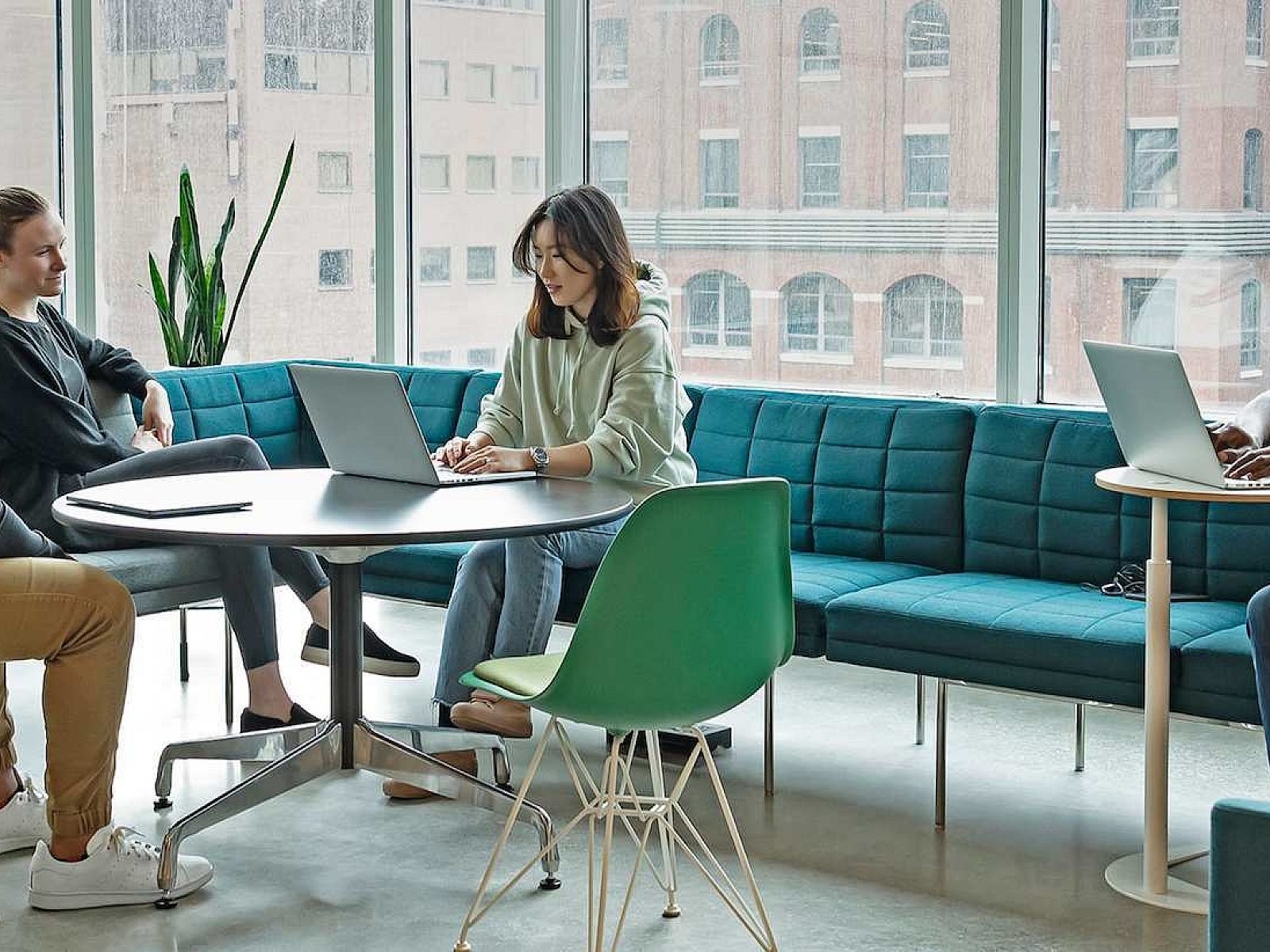Pivot & MillerKnoll Host Designer Roundtables
How do we solve the riddle that is the role of today’s workspace? Read more for trends and insights that are shaping today's workplace.

Pivot and MillerKnoll recently hosted several of the brightest and best architects in northern and southern California for a series of roundtables on the future of the workplace.
Our conversation ranged from generational differences to equity to economic factors, and our participants noted that the number of components that go into designing an office space in this new era can be overwhelming. With so many considerations in designing today’s office, it is easy to fall into a type of decision paralysis as we evaluate which trends or challenges to address. The underlying theme and our takeaway is this: Our process should focus on human-centric design coupled with data and research to inform our decisions. Every space is as unique as the user, and to be effective we need to listen and respond to the need of each distinct situation to be successful in creating spaces that connect and nurture interaction.
The human piece of design is the side that many of us came face to face with after returning to an in-person office environment after emerging from several taxing years – a global pandemic, a scarcity of childcare and an uncertain economy. It is the side of design that has pushed inclusive spaces and designing for the neurodiverse to the forefront of what many companies are considering when configuring their offices to better suit the needs of their employees.
This notion of putting human needs in design first isn’t new, but with a renewed focus on mental health, wellness, and the role of community, it is a needed departure from traditional programming methods. In the absence of real data to drive design up until now, designers were often tasked making the best guess on what would work based on a discovery process with clients – merging wants, needs, branding, and an educated prediction on what functions are being fulfilling in the space. There are now so many factors that impact the use of space post pandemic that this approach is no longer effective.
"Connecting individuals in a physical environment is one of the most human benefits of good design. As work moves more toward the digital and virtual, spaces are the catalyst to bring people together, where we may be otherwise at risk of losing that connection."
As work has become less traditional in the sense that many of us can do our jobs from anywhere, during any hours, we find ourselves leaning on research, anthropology and sociology, environmental psychology and data (such as that gleaned from Leesman) to not only study the changing needs of how humans work and interact with spaces, but provide a basis for design decisions. We believe that the real answer to this design dilemma is to create spaces for human interaction where community is the end goal, while taking into consideration the very distinct needs of each client and even each space within their office.
Pivot’s refresh of our Santa Clara showroom is a prime example of how research and environmental psychology inform design, as many of the changes are a result of answers from employees to the Leesman survey. This data allowed Pivot to sift through the multitude of decisions and focus on making changes that would have the greatest impact to the people in our space.















